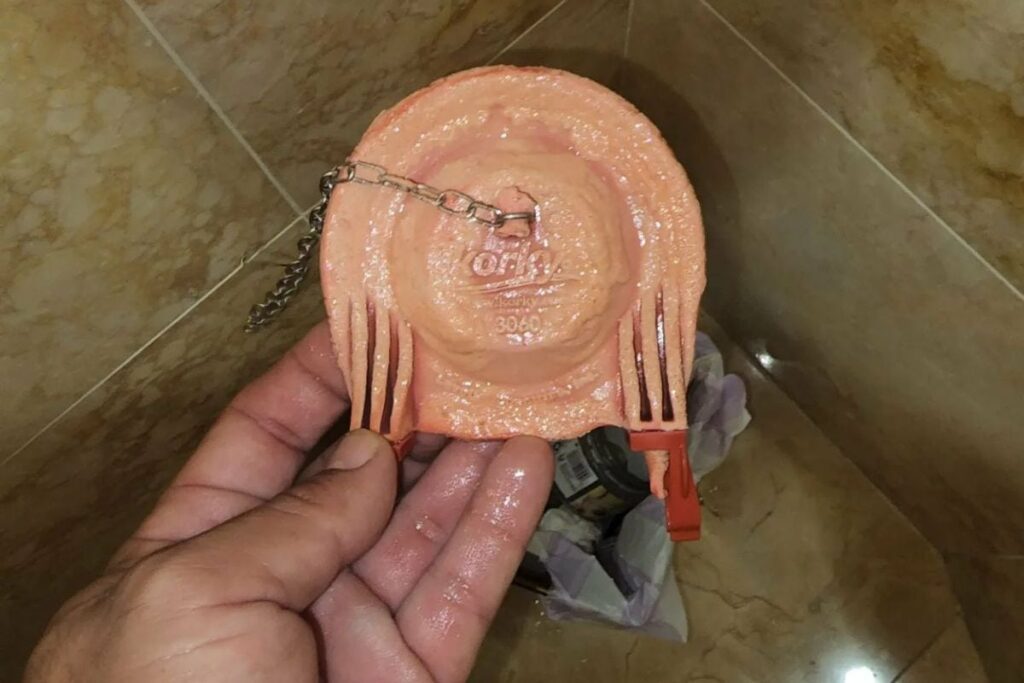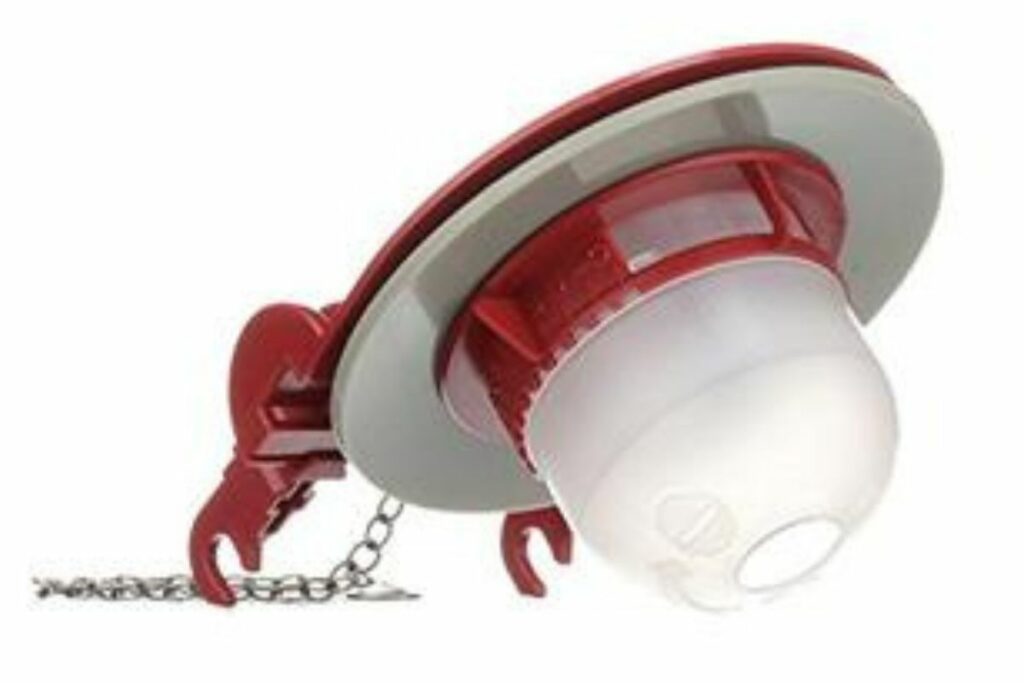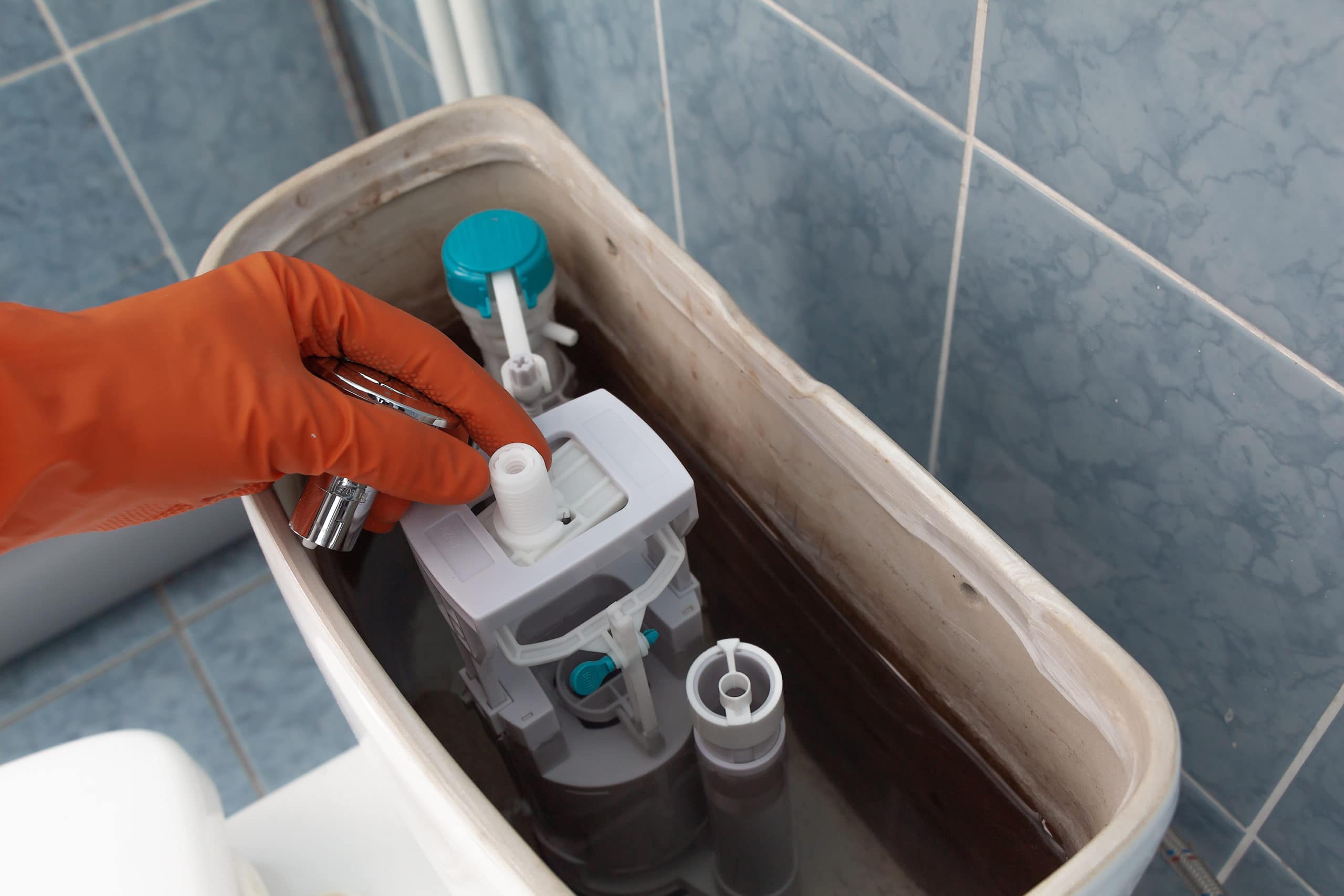Have you been woken up in the middle of the night by what plumbers call a “phantom flush”? It occurs when your toilet flushes itself randomly for no apparent reason. Not only is this problem annoying, but it also causes a lot of water wastage. So, why does it happen?
A leaky flush valve seal (also called the flapper) is the most common reason for your toilet randomly running for a few seconds. Sediment built up on the seal prevents it from closing completely, and a small amount of water continuously leaks into the toilet bowl. If enough water leaks out, it actuates the siphon mechanism and causes flushing.
Random flashes are an indication that your flush valve is failing and needs your attention. That said, there can be other reasons for the so-called phantom flush. Let’s take a closer look at some of them and see how you can address them.

What makes your toilet Run Randomly for a Few Seconds?
A faulty flush valve seal is the most common culprit if your toilet is randomly running for a few seconds. However, it is not the only reason for this problem. Here are a few most common reasons for a toilet being afflicted by the “phantom flush” bug!
Sediment Deposit on the Flapper
A flush valve seal is a flap of rubber that seals the water entrance from the flush tank into the toilet bowl. If there is a leakage in this valve, a small amount of water keeps seeping out of the flush tank into the toilet bowl.
As the water level in the toilet bowl crosses a threshold level, the siphon in the plumbing is activated, leading to the flushing of the contents. Depending on the amount of water leaking from the flapper, it might take minutes to hours for the water to cross the threshold. Hence, you see your toilet flushing randomly if this happens.
The problem with flush valve seals occurs more frequently if you have hard water containing a lot of minerals and sediments. As these sediments accumulate, they decrease the efficiency of the valve to make a tighter seal leading to phantom flushes.

Problem with Controlling the Flapper
The flapper chain is an essential component of the flushing mechanism of your toilet that helps the flapper function properly. The chain holds the flapper open, allowing the water to drain into the toilet bowl. Once the water is drained successfully, the flapper snaps back, establishing the seal before the tank can fill again.
The flapper chain must be the right length for the flush to work properly. If it is too short or too long, the valve will not sit back right over the opening, creating a leak.
Water Level in the Flush Tank
The water level in the flush tank can also lead to random flushing of your toilet. As you flush your toilet, water rushes out, and once the flush tank is empty, it gets filled again by water coming from the input valve. The entire flushing mechanism works because there is a balance between water going out of and into the tank.
If there is too much or too little water in the tank, the flushing mechanism becomes off-balance resulting in phantom flushes. Ideally, the water level in the flush tank should be about an inch below the input valve.
Problem With the Flush Handle

When you pull down the flush handle, it pulls the flapper up with the help of the flapper chain to activate the flushing mechanism. Ideally, the handle should return to its neutral position as the water fills the tank and the flapper closes. If the handle stays up rather than flopping back, it can prevent the proper closing of the flapper.
As more water than necessary enters the flush tank, phantom flushing occurs.
How Can You Fix Phantom Flushes?
The solution to the phantom flushing problem depends on the root cause of the problem. Here are a few things you can do to fix the issue of your toilet running randomly.
Identify the Cause
If you are experiencing phantom flushes, the first thing to do is investigate the matter. Open the lid of the flush tank and check out whether there are any of the following issues-
- Sediment build-up in or near the flapper
- Pull the flush handle and see whether it gets stuck rather than snapping back to its neutral position.
- See if there is a problem with the float ball.
- See if the flapper chain is tangled, too short, or too loose
Address the Issue
Sediment build-up

If you see any sediment build-up in the flapper or the valve assembly, you must clean it thoroughly with an Emory board. You should close the input valve and pull the flush handle to drain all the water out of the flush tank. Now carefully clean the edges of the valve and the rubber flapper. Getting the flapper clean shouldn’t take more than a few minutes.
Cracked ball float
If the ball float is cracked or damaged, unscrew it from the handle and replace it with a new float. Thankfully, you don’t need any tools to do it either. Just unscrew the ball float and screw back the new one.
Too Long or Too Short Flapper Chain
Ideally, the flapper chain should have at least half an inch of slack in the middle when the valve is closed. If the chain is too long or too short, you can remove a few lings and reattach it.
Will a Randomly Running Toilet Waste Water?
Absolutely! Your toilet should flush when you want it to flush. A randomly flushing toilet wastes much water and uses more than is needed. The result is an increased utility bill!
If you don’t want to waste water or save on your utility bill, it is important to fix this issue.
Do I need to Call a Plumber for a Randomly Running Toilet?
As we discussed above, there can be multiple reasons for a randomly running toilet. While the fixes are not that difficult if you are unsure or don’t have experience handling such situations, it is better to seek professional help.
The last thing you want is to break the flushing mechanism and risk flooding your bathroom. So, if you think you can’t handle it, call a plumber.
Just so you know, a plumber may charge between $50 to $200 to fix a problem like this, and if some spare parts are needed, the cost can be higher.
Frequently Asked Questions
Should I try fixing my randomly running toilet?
If you have some handyman experience, it is worth taking a shot at fixing the issue yourself. In most cases, simply cleaning the flapper can solve the problem. If you are unsure, it is better to be cautious and ask for help.
Can I change the flapper in the flush tank myself?
If you have a few tools and are willing to put some elbow grease into the job, you can easily replace the faulty flapper (flush valve seal). You can find many options online, but I recommend the Fluidmaster 5403 Water-Saving flapper from Amazon.com. It fits most American toilets and is very easy to install.

To Conclude
A phantom flush can be annoying, especially in the middle of the night. Thankfully, solving this vexing problem is easy, and you can do it yourself.

Amos Christen graduated with a bachelor’s degree in Interior Design from Drexel University — Philadelphia, PA. Since 2003, Amos has worked with top interior design professionals in this area, including architects and interior/graphic/lighting designers. As a skilled interior designer, Amos Christen is highly versed in fine arts and crafts and uses that to supplement his main area of expertise. He often publishes articles related to home décor on several websites, including Sprucetoilets.com, Sprucebathroom.com, and Mybesuitedhome.com. He also contributes to leading interior design magazines.
